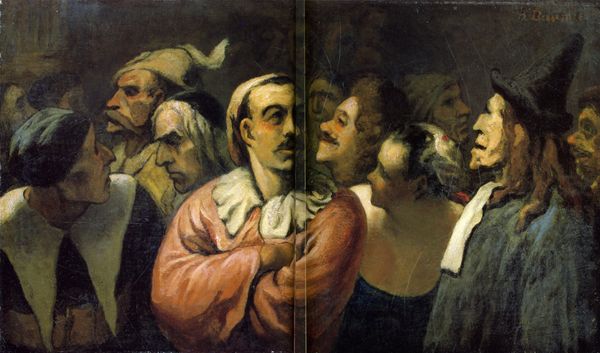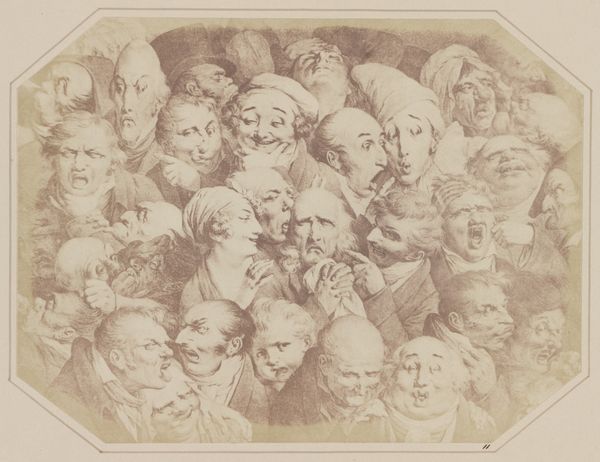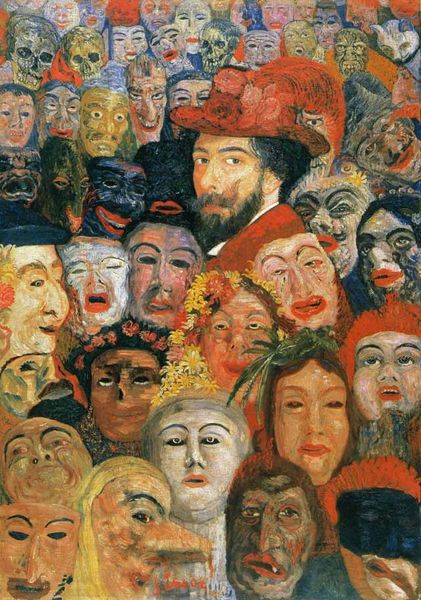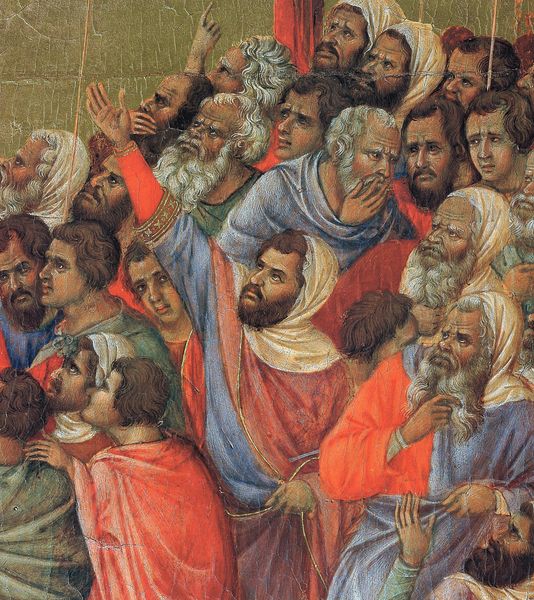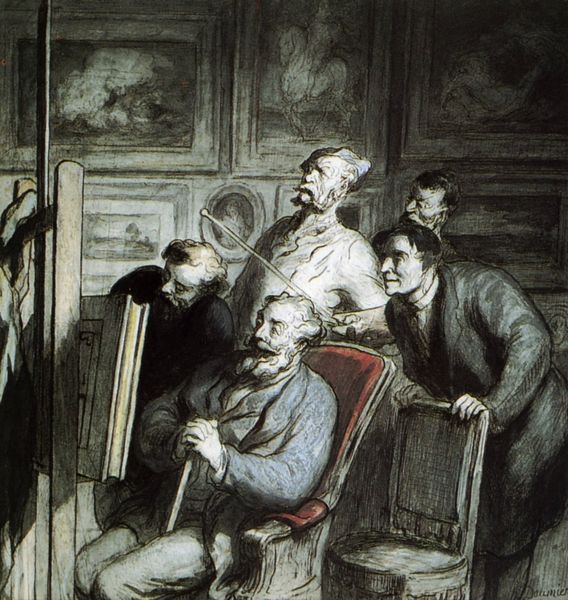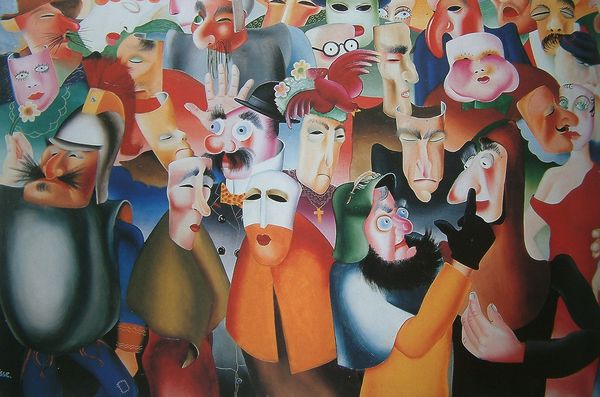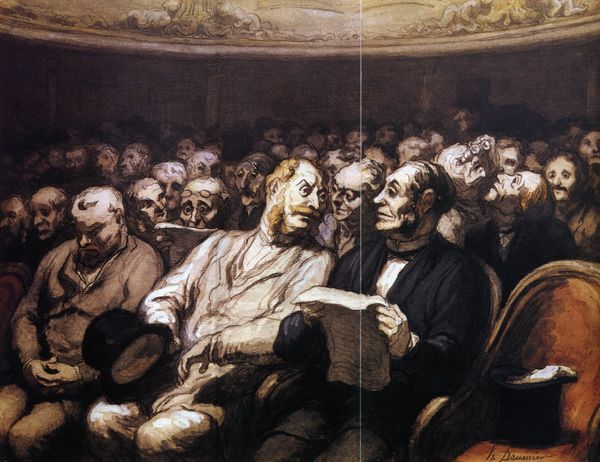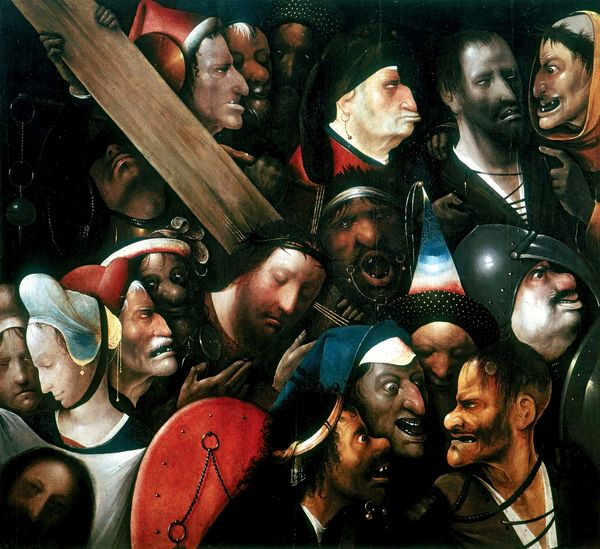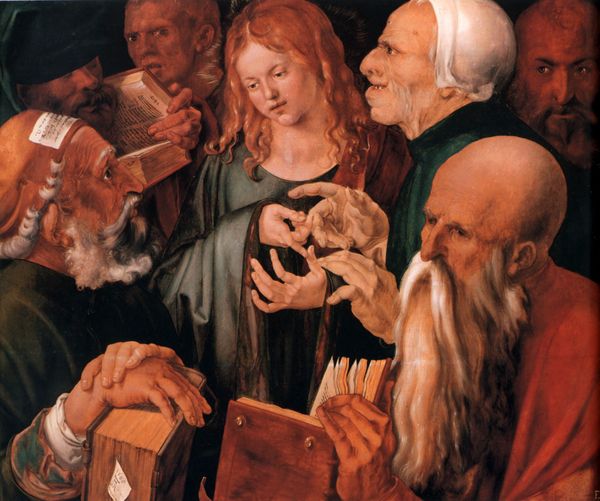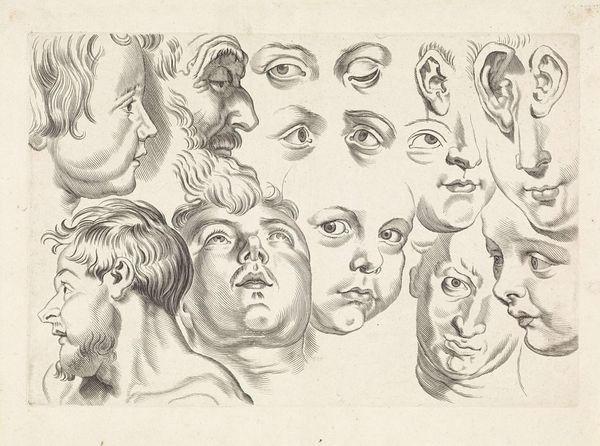
oil-paint
#
portrait
#
16_19th-century
#
impressionism
#
oil-paint
#
oil painting
#
group-portraits
Copyright: Public domain
Editor: Looking at "Meeting of thirty-five heads of expression" by Honoré Daumier, an oil painting seemingly from the 19th century... it's a whirlwind of faces! They are packed together with exaggerated expressions, some comedic, some terrifying. It feels like a commentary on societal chaos, but what exactly is Daumier trying to say? How do you interpret this work? Curator: This painting strikes me as a potent commentary on the dynamics of crowds, particularly within the political sphere of 19th-century France. Daumier was known for his social and political critiques. Consider the varied expressions: anger, fear, smugness, despair. Doesn't this almost mirror the spectrum of opinions and emotions one might encounter in a heated political debate or social upheaval? Editor: Absolutely! The individual faces, while unique, seem to blend into a single, overwhelming mass. It's almost like the individual gets lost in the collective. Curator: Exactly! Daumier might be suggesting that in the throes of a crowd, individual identities and nuanced opinions can become subsumed by a more primal, collective emotion. Think about the power dynamics inherent in crowds – who is truly leading, and who is simply being led? Consider how this relates to the concept of groupthink and its impact on social justice movements, for example. Editor: So, it’s less a portrait of individuals and more a portrait of collective behavior and possibly even collective manipulation? Curator: Precisely. Daumier seems to be prompting us to critically examine the social forces that shape individual thought and action within a crowd. He’s asking us to question whose voices are amplified and whose are suppressed. It's interesting how a historical painting continues to speak to contemporary anxieties about the power of groups, propaganda, and the suppression of dissent. Editor: It's unsettling how relevant this feels today. I now see beyond just caricature. Curator: Indeed. Daumier's work encourages us to engage with art history as a lens for understanding and critiquing present-day social and political landscapes. Art allows us to ask critical questions of the world around us.
Comments
No comments
Be the first to comment and join the conversation on the ultimate creative platform.


